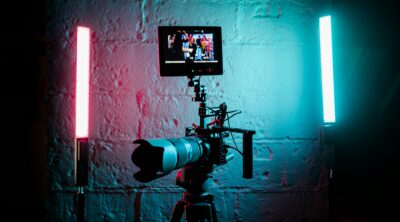< Back to all posts
Why and How to Build a Compelling Brand Book
How do you keep your company’s visual content looking strong and consistent? This is an important brand strategy consideration today. Your competitors have likely given thought to this issue, and you need to keep up to remain a recognizable, successful brand in the eyes of your target audience.
Your No. 1 tool in defining the way your content looks and feels is a brand style guide, also known as a brand book. Creating a shared, living document available to anyone and everyone creating content for your company is an accessible way to define your brand guidelines, enforcing consistency and quality without introducing friction into the creative process.
Across mediums and creative teams, a brand book defines the face your company shows to the world.
Why use a brand book to track your company’s visual identity?
Using a brand book as the repository of all branding information is a way to enforce consistency without manual effort. Suppose there’s no central place to check for approved brand fonts, color palettes, stylistic guidelines and more. In that case, employees will have to field requests for information, or else content creation will simply go on without clear branding guidelines for designers.
A good brand style guide solves both problems simultaneously. Content creators, whether they’re employees or third-party contractors, have access to the latest standards, as well as finished pieces of collateral like logos, stock imagery, employee photos and video B-roll.
The result is a faster and more efficient content assembly line. Visually focused marketing communications deliverables such as branded videos, eBooks, infographics and printed materials like brochures are simpler to build out when there are easily accessed answers to any possible aesthetic questions.
Not only is the content easier to produce, but it’s also more visually unified and sophisticated than it would be if assembled without branding guidelines, encouraging brand recognition among your target audience. Brand books are therefore a useful investment for all companies that have locked down their brand colors, logo design and other visual brand elements.
How do you build a high-quality brand book?
Once you’ve committed to producing a style guide, it’s time to set the parameters: What goes into your brand book?
Ideally, you’ll make room for:
- Visual components to add to finished deliverables: These can include both still images and short pieces of video B-roll. It’s useful to have go-to images and clips of your headquarters and your employees at work. Standardized product images are also must-haves, potentially accompanied by videos of the items in use. Finally, it’s worth including consistent headshots of your executives and other employees who may be mentioned by name, either in your own content or in third-party stories about your brand.
- Branding guidelines for your logo, brand colors, preferred fonts and more: Clear rules about logo usage, colors, preferred typography style and more can keep every deliverable consistent across graphic designer teams. This helps you assemble a catalog of impressive-looking content, even when you employ multiple outside partners for content creation or spread responsibilities among numerous teams.
- Finished content to serve as examples and templates: When you produce a high-quality video, eBook, brochure or other visual deliverable, that content can go into the brand manual to act as a signpost for creators. Working from example content, it’s easy to produce a feeling of cohesion.
Beyond the contents of the brand book, there are also a few details to attend to. Your document should be:
- Accessible in the cloud: Your visual guide can only live up to its potential as a single source of truth if it’s universally available. Everyone producing content for your brand, inside or outside of your walls, should be able to access the latest version of the brand manual without any challenge.
- Updated often: Another key piece of the brand book puzzle is updates. It’s important that the brand guide reflect your company’s up-to-date brand strategy and identity. Updates can come whenever there’s a major change, as well as on a regular schedule, whether that means annually, quarterly or monthly.
Ready to update your brand playbook?
If you don’t already have a brand style guide, it’s always a good time to produce one. Your creative director can work with an experienced videography or photography agency to produce high-quality content for the book, filling in any brand element gaps in your current lineup.
If you don’t have high-quality brand assets of any particular type, it’s likely better to produce them now, rather than settling for disappointing examples or leaving blank spaces in the guide. After all, the goal of the document is to be a comprehensive repository of brand elements and marketing communications examples that will shape your brand voice in content marketing materials and beyond.
To learn much more about brand visual guides, check out our eBook.







Leave a Reply